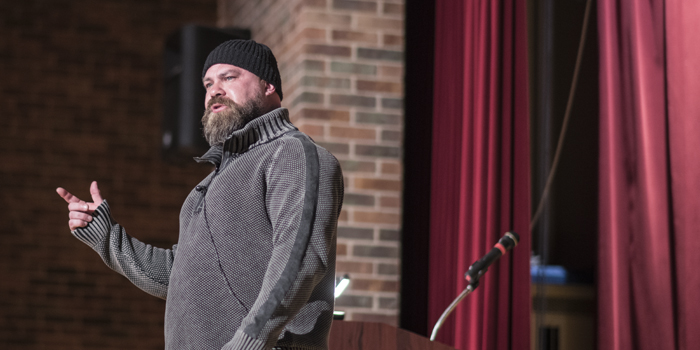
Training young athletes today isn't exactly the same as it was a generation ago. Lifestyles have changed and, as a result, so has the level of preparedness. In this first video of his presentation from the 2018 elitefts Sports Performance Summit, Jim Wendler introduces his presentation on the topic of training young athletes. Many know Jim Wendler as the mind behind 5/3/1 and from his countless videos, articles, and Q&A responses on elitefts.com over the years. In addition to these things, he currently serves as strength and conditioning coach at London High School, working primarily with the football team.
Wendler begins his presentation by talking about the biggest chasm he sees in the world of training today, and that is the difference between what is portrayed online and what real coaches are doing. If you look through social media, what is portrayed as "training" is vastly different from what real coaches are doing. Real training isn't beating the shit out of athletes every day. It isn't glory every single time you step in the weight room. Real coaches are just trying to find ways to make their athletes better.
WATCH: Jim Wendler's UGSS Introduction — Earn the Barbell, Training Philosophy, and Industry Trends
With Wendler's junior high and high school athletes, helping them get better doesn't look like the type of training you may be expecting from someone as experienced in strength training as him. He says that you don't need a PhD in Exercise Science to work with young kids or to coach them to get better; all you need is a little experience and a lot of common sense.
The level of preparedness for most kids today, compared to when Wendler was a high schooler, has changed dramatically. Some kids come to him unable to do a bodyweight squat. Some kids come in unable to jump on a 14-inch box. With eighth graders, Wendler says that only three out of 10 can do push-ups and only two out of 10 can do chin-ups. The good thing about this is that, if they suck, it doesn't take a lot to get them better. If an athlete can't run a mile and do chin-ups and push-ups, the program doesn't need anything special. These athletes have:
- No strength base
- No aerobic base
- No movement base
To accommodate this in a simple manner, as part of the warm-up Wendler has them do many gymnastic style movements. Because they haven't been exposed to these types of movements while growing up, Wendler has athletes at this level do things such as cartwheels, front rolls, and handstands. Even though these movements are part of a warm-up that is only three or four minutes long, over four years it really adds up and makes a difference. Wendler adds that, because athletes today have spent less time doing things like playing outside on a jungle gym or monkey bars, the starting point has changed from a generation ago. Coaches need to accept this for what it is. When Wendler started, it drove him nuts and was incredibly frustrating. But once he accepted it and recognized what the real starting point was, he was able to start making changes with simple training.









